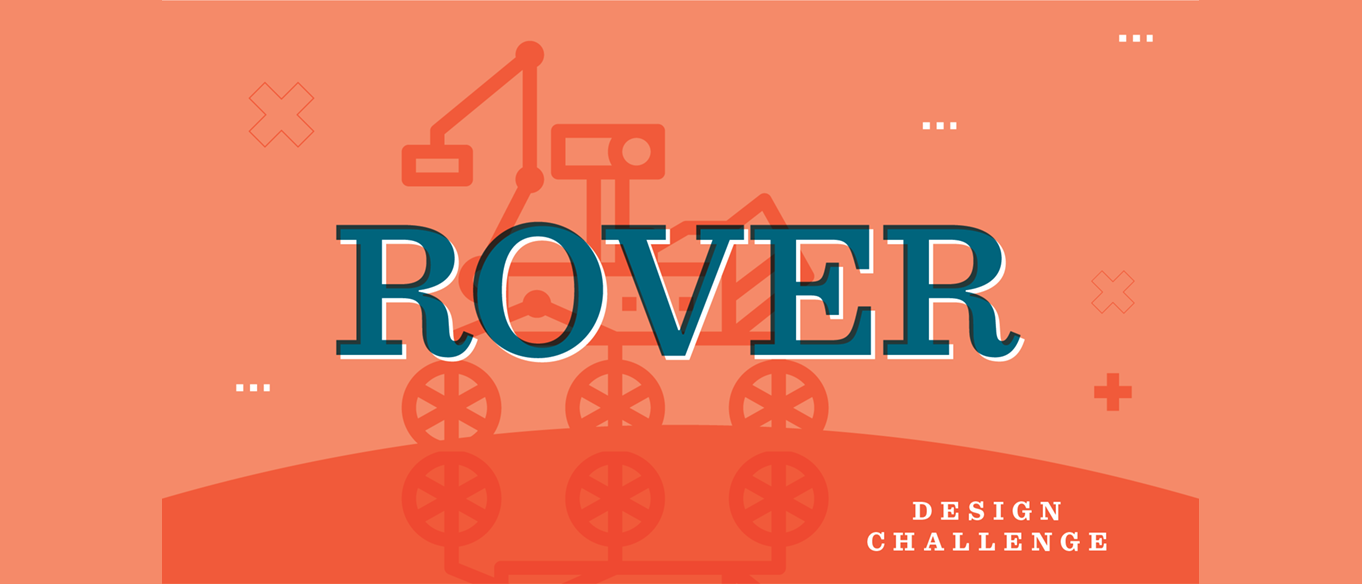
Design and build a vehicle for exploring on another world using materials you find around your home.
Age: 5-12
Time: 20-40 minutes
Topics: vehicles, moons, planets, design challenge, models
What you need:
- Blank paper and pencil for sketching designs
- Cardboard or paperboard pieces, any size and shape
- Aluminum foil
- Glue and/or tape
- A variety of building materials to inspire imagination, such as:
- Round shapes for wheels: spools, cardboard tubes, foam hair curlers, plastic drink lids or caps
- Long, thin shapes for axles: chopsticks, skewers, pencils, dowels, straws
- Structural elements: popsicle sticks, small cardboard boxes, disposable bowls or cups
- Small, lightweight items for parts: bottle caps, cotton balls, soda can tabs, game pieces, small aluminum tins
- Decorative elements: stickers, construction paper, colored electrical tape
- For an added challenge, consider including functional pieces such as suction cups, magnets, hinges, wire, rubber bands, etc.
What to do:
1. Think about what it would be like to explore a new world. How much can you see by walking? What if you want to see more of the planet or moon than that? What kind of vehicle might you need to explore another planet or moon?
2. Do some research by looking at photos of planetary rovers. Search things like NASA’s Lunar Roving Vehicle, Lunar Electric Rover, Audi’s Moon Rover, or the Mars rovers. What are some of the different features you see? How are the rovers similar? How are they different? Think about these things:
- What tasks does the rover need to do?
- What parts or features help it accomplish those tasks?
- What might be different about doing those tasks on another planet instead of Earth? What might be some challenges of that environment?
3. What features will your rover need to have? Sketch out your ideas on paper first. Include these things:
- What kind of environment will your rover be moving around in?
- Will it carry people or not?
- What tools, instruments, or detectors might it need to have?
- How will it get power to move?
4. Look over the building materials you collected, then begin creating your design.
5. As you work on your rover, think and talk about the parts your rover needs and how the materials you use represent them.
- What part of your rover will that be? What does that part do?
- What other parts are you going to add to your rover?
6. Share your finished design with someone and talk about the different parts your rover has.
- What task does each part do, and why is it important for your rover?
- What challenges did you have making your model? How did you solve the problems?
7. Other ideas to try: Can you add parts to the rover that move or perform an action? Will it need wheels that turn, swing arms that move, or magnetic “grabbers” to pick up metal objects? What other moving parts might it need?
What's happening?
Like other machines, planetary vehicles are made of systems of parts that work together. Each part has a specific function that is part of the larger job of the machine. Parts of a rover vehicle might include:
- A drive mechanism (engine or motor)
- Wheels or treads for moving over the ground
- A battery to provide power and solar panels for recharging
- Communications equipment to send and receive information or commands
- Places for crew to sit and a steering mechanism
- Remote-controlled arms or other instruments for collecting samples
- Instruments for analyzing samples of rock, gases, etc.
- Computer systems to control the various parts
The parts of a rover are specifically designed for the environment it will be in. The wheels must be suited to the type of ground (sandy, rocky, soft/swampy); the machinery must be able to handle the environmental conditions (hot or cold temperatures, wind, rain, or no atmosphere at all); the tools and instruments must be able to collect the right kind of samples and data for that planet.
Engineers who design space vehicles and other machines start by making models of their designs--something that shows what the machine will be like--before actually building it. These might be drawings, plans, or smaller, simpler versions of the actual object.

